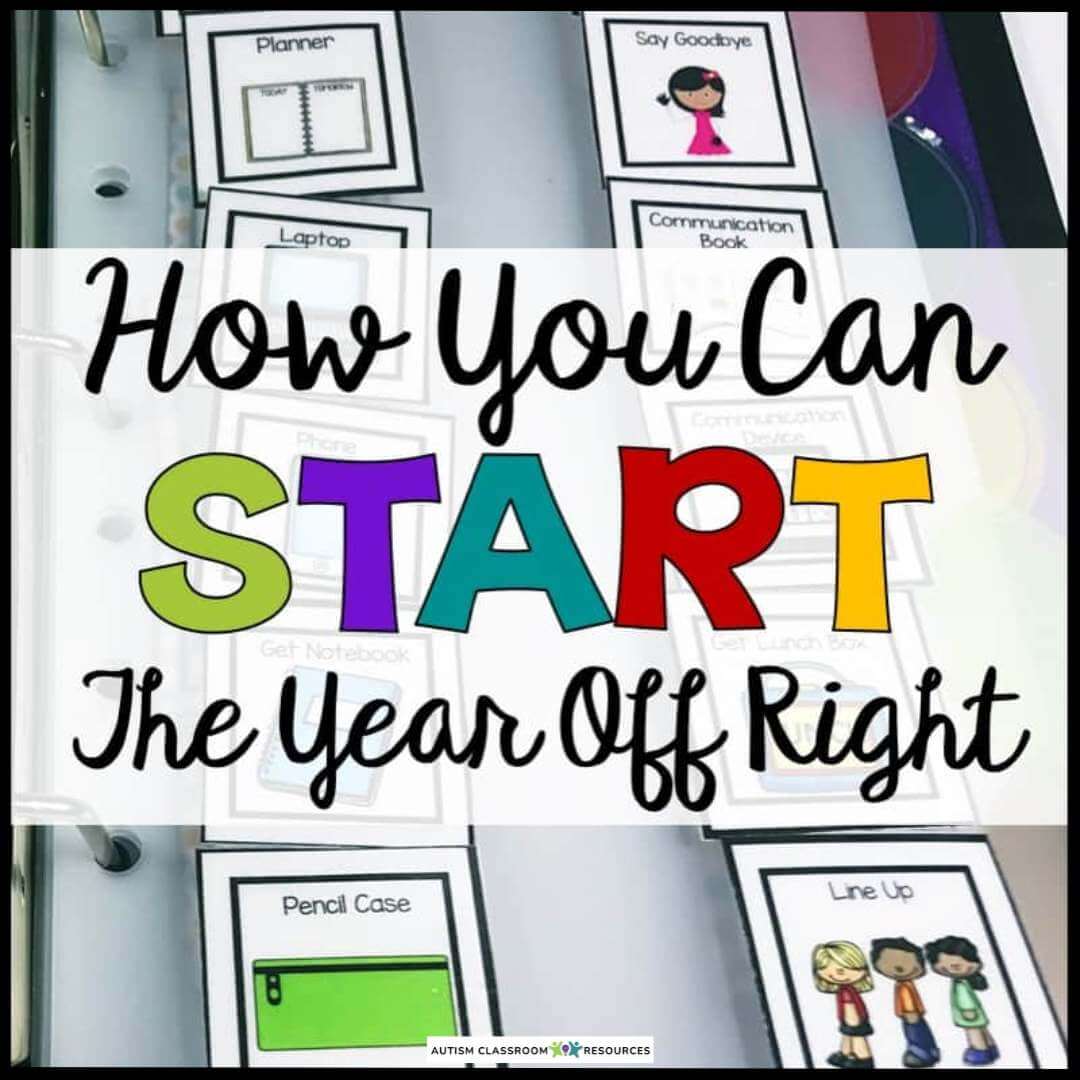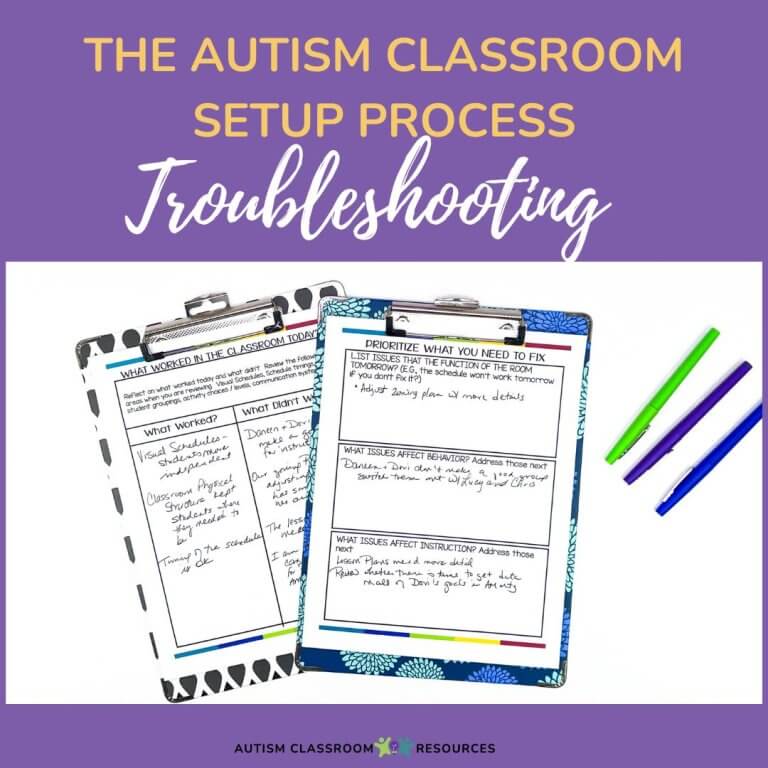As we think about back to school, there are a few things that you can do to start off the year strong. Putting some time in up front will definitely help to make life easier down the line. But, you don’t have to do EVERYTHING if you are just starting off in your first or second year in the classroom. I’m sure everyone has their list of things that HAVE to be done before school. So I thought I would share mine.
Inside: I’ll share what you want to think about in a self-contained classroom or a classroom designed for students with autism before school begins. Then you’ll find 6 tips for preparing for back to school. Once students come back, check out the 4 tips for handling the first few days of school from troubleshooting, running your schedule flexibly and pairing yourself with reinforcement, I’ve got actionable steps with tips and hints to quell the overwhelm.
Table of Contents
Before School Begins
These are the tasks you can do before the students arrive at school. They are the things that take time, while your admins want you at training. Obviously there are tasks like setting up your furniture that are important as well. But these are the ones that are important even though they might not seem to be important to have done before students return. However, as Mary Poppins says,
Well begun is half done!
Mary Poppins
#1 Tip to Prepare for Back to School: Learn as much as you can about your students
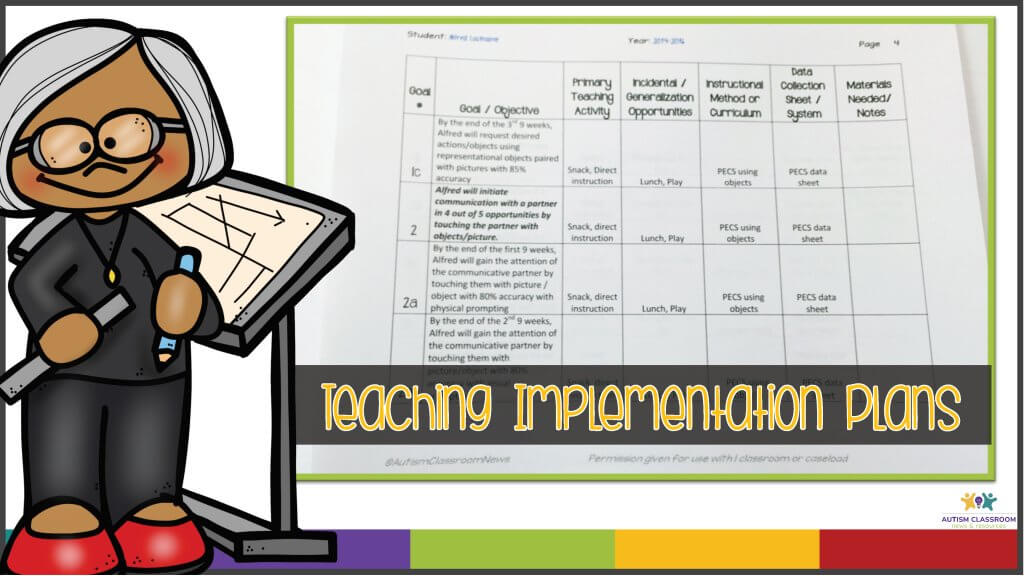
Whether you make Teaching Intervention Plans, read through the IEPs and write down what the students need. Review any behavior plans you have and review them with your staff.
#2 Tip to Prepare for Back to School: Create a schedule that has the students engaged throughout the day.
We need to break our own BTS tasks down like we do to teach our students. #BTSReadywithTpT
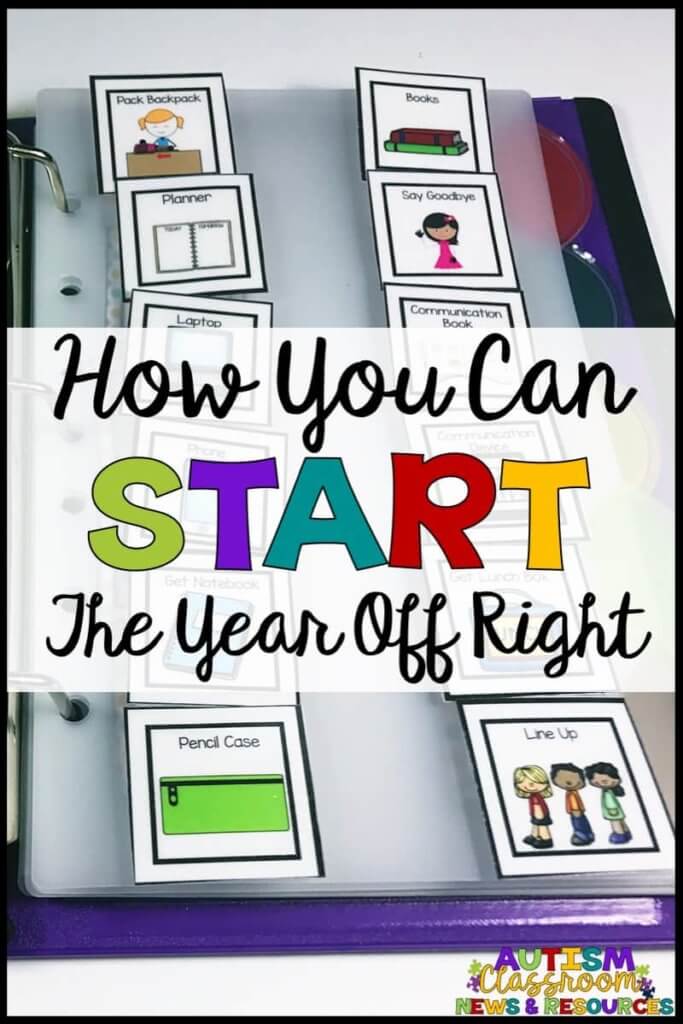
You can learn more about creating schedules in these posts. And know that you will likely change the schedule, but you need a place to start That provides structure for the staff and the students. Don’t leave time open…avoid downtime.
[socialpug_tweet tweet=”We need to break our own back to school tasks down just like we do for our students in teaching special education. #BTSinSped #specialed #autismteacher” display_tweet=”We need to break our own back to school tasks down just like we do for our students in teaching special education.” style=”2″]
#3 BTS Tip for Special Ed: Create a big set of work activities
Create a big set of activities for students to engage with during the day that you can pull out if you have downtime. Workboxes like we use for independent work are a great thing to have on hand…then if you have unexpected gaps in the day, you can pull them out for the students to interact with. Make them simpler than you think the kids need so that they can be more independent with them.
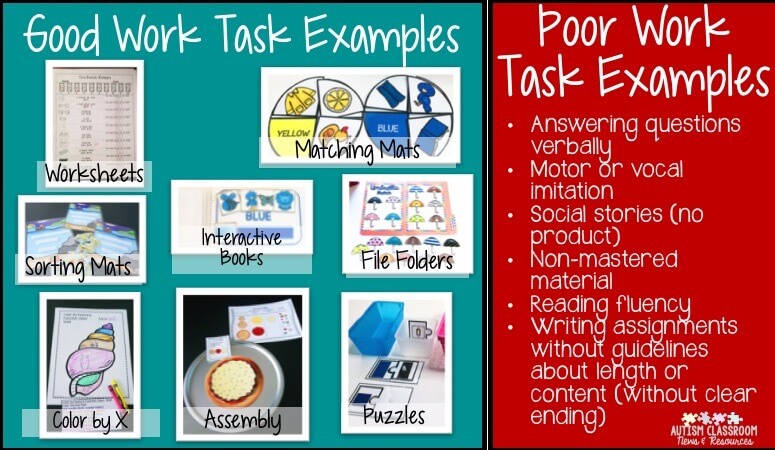
These types of tasks shouldn’t make up all of your curriculum activities. But they are a great thing to have on hand when needed to fill some time while you work out the kinks.
Tip #4 for Back to School in Special Ed: Get to Know Your Team
Spend time at the beginning of school, hopefully before the students come in getting to know your staff. You can’t build a team without building relationships between the people and that takes time. I have some ideas for how build those relationships in my Building Classroom Teams toolkit. A classroom vision statement template is another good way to bring everyone together with a common purpose. You can find one in that toolkit and I talked about them in this post.
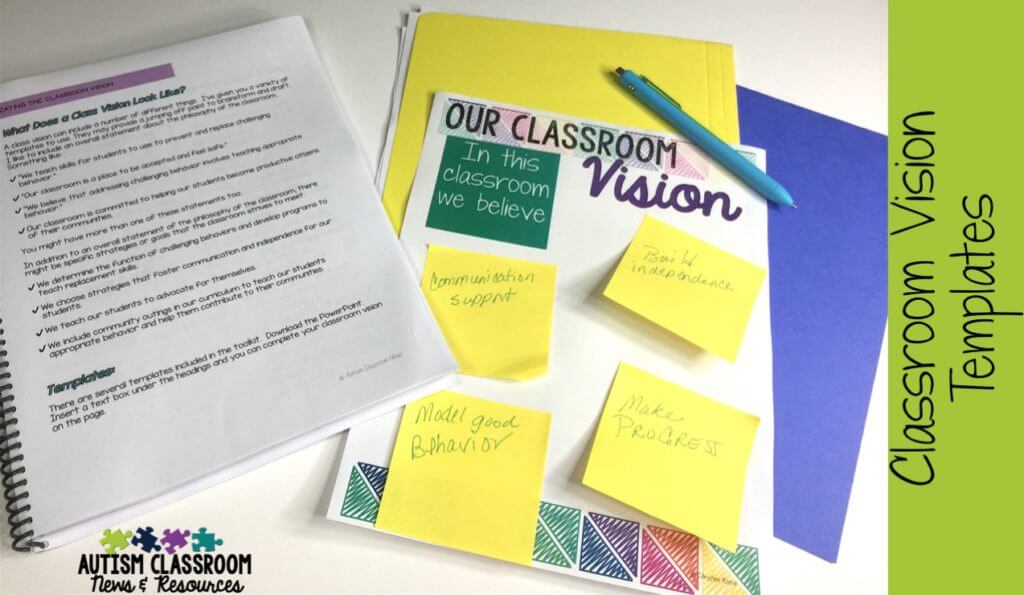
Tip #5 BTS in Special Ed: Create a Zoning Plan
Make a zoning plan that outlines what you want the paras to do within the day. Be explicit about what you want them to do and who you want them to be with. Get their input on it too so that it’s a team developed plan. Remember that a staff zoning plan is more than a schedule. It’s a comprehensive list of all the little things that need to get done throughout the day. It will evolve as the beginning of the year progresses, so don’t expect it to be perfect at the beginning of the year.

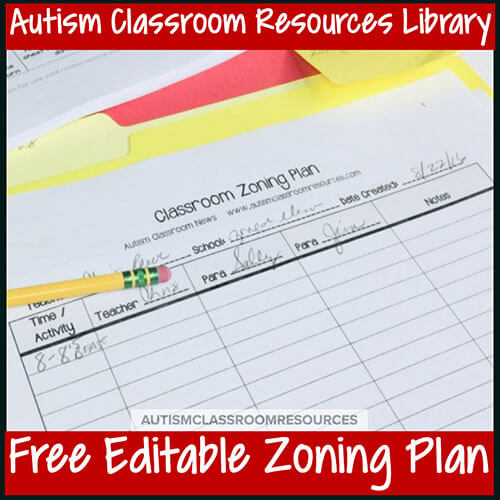
Tip #6 Special Ed BTS: Create classroom visual supports
Put visuals up for the daily schedules, check-in stations, finished signs or stop signs on doors and computers as visual reminders, and get your independent work systems set up. You can read more about what visual supports I think are critical in this post.
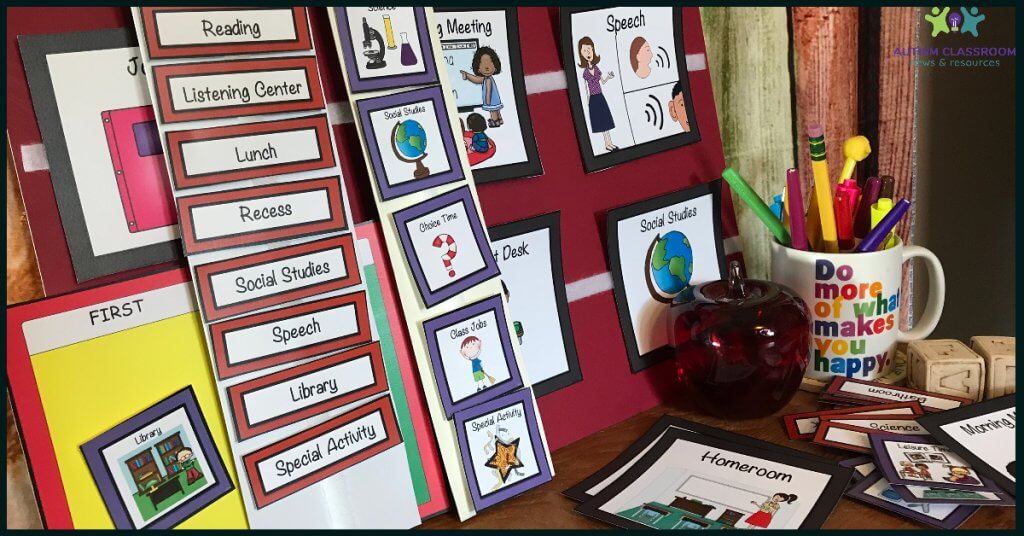
The First Few Days of School
These are things that you’ll worry about once the students return. Some will evolve. Things won’t run completely smoothly and that’s OK. But your time put in on the tasks above will pay off.
Tip #1 Run the schedule flexibly
Use the schedule but be flexible. Make copies of the schedule for every adult, but communicate with each other about when to stop or start an activity. If something is working it can last a bit longer and if it’s not move on–but always check with staff so everyone is on the same page.
Tip #2 Pair yourself with reinforcement
Within the activities of the first few days, prepare to just play with reinforcers with the kids. Put them out and see what they are motivated by. Introduce some simple tasks that just get them in the routine of following directions and reinforce them for doing it. Most of all make all the activities of the days engaging for them.
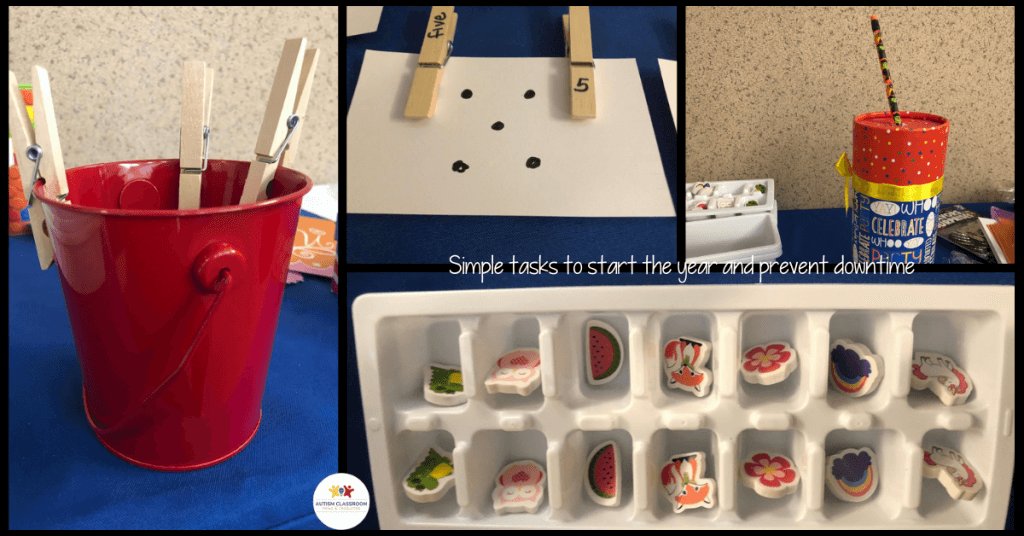
Tip #3 Problem Solve at the End of Every Day
Sit down at the end of the day (with the staff if you can) and review what worked and didn’t work. Figure out what you need to tweak and change for the next day. Make the changes and then do it again the next day. Do this until you get something that works for your students and you and the staff.
Tip #4 Tackle Teaching in Pieces
It’s funny that for teachers who specialize in breaking things down to teach them in small steps, we don’t take our advice. We need to remember we don’t have to do everything AT ONCE. Better to be successful teaching a progression than unsuccessful because you tried to do too much. Make a plan.
[socialpug_tweet tweet=”In short, don’t try to do everything at once. Add things in one piece at a time. That’s going to make it less overwhelming for all of you and likely to be more successful. #BTSinSPED #classroomsetup ” display_tweet=”In short, don’t try to do everything at once. Add things in one piece at a time. That’s going to make it less overwhelming for all of you and likely to be more successful. ” style=”2″]
For instance, if your students don’t know how to use the visual schedules think about just teaching 1 student or 2 for each staff member. Give the other students their visuals to transition. Start with the most independent students And move toward the students who need more assistance. This allows you to focus on instruction and not drive yourself crazy. Get more tips on how to teach visual schedule use in this post.
Over time, start adding in your initial assessments like the GPS for the Unique and the STAR or other curriculum based assessment. Start increasing difficulty of tasks and eventually reduce the use of reinforcement –fading it out while keeping the students responding well. Then start to add data in.
And above all, don’t forget that you can do this!!! And keep coming back here for free resources and more tips. We’re here to help!

